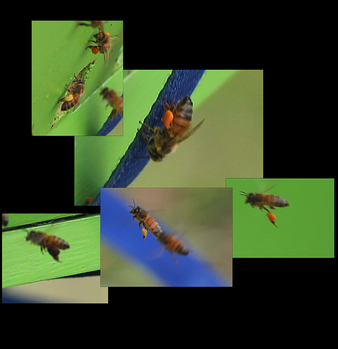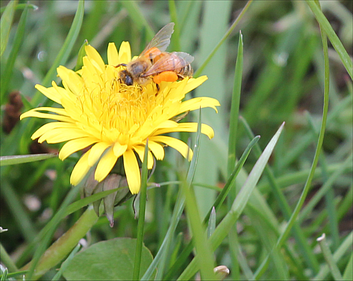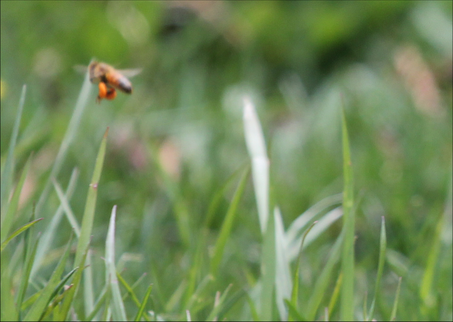Back from my trip. The bees have been busy. Beth had to feed them for me twice while I was gone.

I took some pictures this morning and there is a lot of pollen moving in. I noticed three types: Light yellow, orange, and a darker brown. Not sure about the last one or the yellow, but I'm pretty sure the orange is dandelion. They are pretty abundant in the yard right now.

Here one of the girls loaded up on a dandelion. They will pack as much pollen on their legs as they can hold, which is quite a lot. Pollen will provide them with a protein source, while nectar is an energy source.

Once she is loaded up, it's off to the hive where she'll hand off the cargo to younger bees. The bees here are the oldest in the hive, having worked their way up through bee hierarchy to the final, and most risky, life stage: foraging. After two to three weeks, the wings will start to give out and she'll pass on, hopefully to be replaced by another up-and-coming sister.
So, for now, the hive is busy doing what it should. I'm hoping they will slow down on the sugar syrup soon, which will indicate there is enough natural food around for them to sustain themselves. I'll need to crack open the actual hive structure soon, too, to see what exactly they are up to and to make sure they are healthy, But that will be another day .....



 RSS Feed
RSS Feed